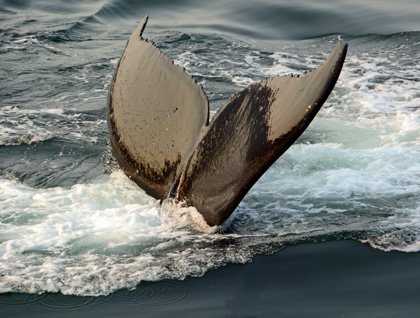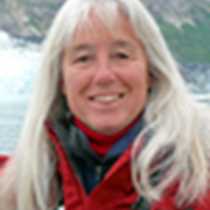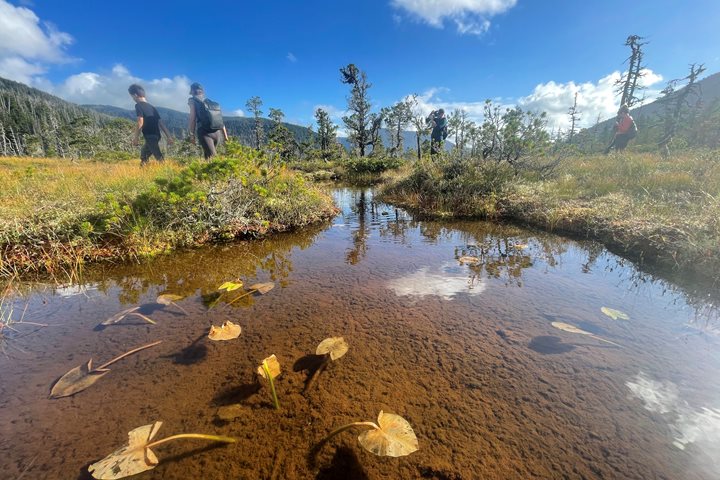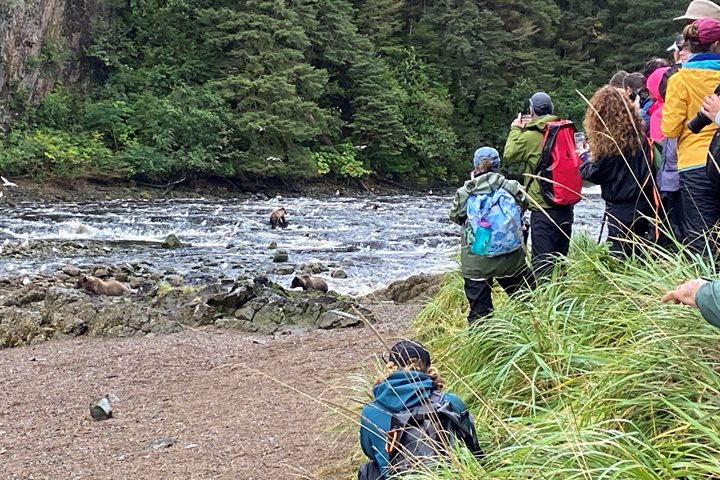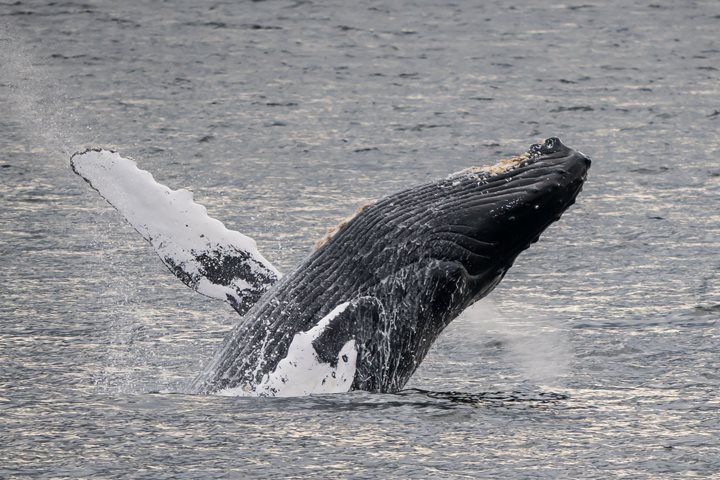Our expedition commenced when National Geographic Sea Lion departed from the dock in Juneau and cruised smoothly southward in Stephens Passage and into Frederick Sound. Dreams were interrupted at 6:00 a.m. when our expedition leader, Lisa, announced over the P. A. system that there were many humpback whales in the area. People emerged sleepy-eyed onto the decks with cameras in hand, ready to take on whatever this beautiful day would yield. It was quite an overwhelming spectacle to see so many behemoths in all directions, listen to their breathing in the still morning air, and marvel as they arched their backs for a deep dive, showing their flukes in a graceful slow motion water ballet. This activity was punctuated by occasional breaches and lob tailing in the distance.
Humpback whales migrate from Hawaii to Southeast Alaska to feed on small schooling fish and krill in the summer. Although they are still protected by the Endangered Species Act, their numbers have rebounded after commercial whaling and they are being considered for delisting. The whales can hear our vessel’s engines but are not frightened by them. They are intent on feeding and several of them surfaced very close to the ship, much to our delight. It is very special to be able to watch them in their natural environment.
We continued to the south. The remainder of the morning was filled with breakfast, staff introductions, briefings relating to our shore excursions, and a presentation by Steve about photographic techniques – A Positive View of Photography, followed by some hands-on instruction and practice.
The afternoon was warm and sunny. We took off in our inflatable crafts toward the icebergs at the mouth of Le Conte Bay. Le Conte is the southernmost tidewater glacier in North America. It spills out of the Stikine Icefield to below sea level. Ice breaks off the terminus, creating icebergs that make their way about ten miles down the fjord only to get stuck on the shallow moraine deposits. We were fascinated by bergs of all shapes and sizes as we cruised around them. Harbor seals rested directly on the low, flat icebergs, or swam with their rounded heads just above water. Various gulls, marbled murrelets and pigeon guillemots were some of the birds in the area.
It was a pleasant evening and as a treat after dinner, we cruised into Thomas Bay, slid by the Baird Glacier, and into Scenery Cove, which lives up to its name. Chasing Ice played in the lounge as a fitting end to an extraordinary yet relaxing day.

